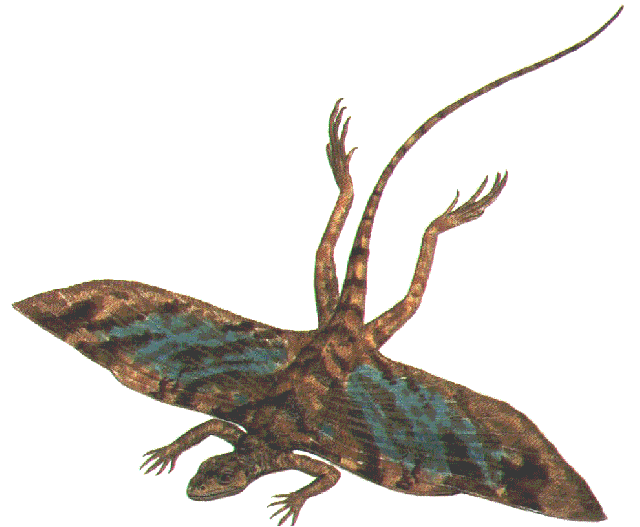
As recently as the mid-1800s, flying snakes of amazing beauty, with ornate feather wings, were believed to inhabit Glamorgan in Wales.

According to one old man who lived at Penllyne in Glamorgan and
died early in the twentieth century, the woods around Penllyne
Castle contained many of these extraordinary creatures when he
was a boy. They were said to be brilliant in colour, as if
spangled with sparkling gemstones, and, like the peacock's train,
their wings often bore eyes; some also had rainbow-hued crests. Yet despite their exquisite appearance, the winged serpents
were slaughtered by the local people as if they were merely vermin because they
preyed upon the farmer poultry. Indeed, the old mans father and uncle has killed
several when he was a youngster. Now, they were apparently extinct. Flying serpents
were also reported at Penmark Place, where one elderly woman claimed that there
had even been a "king" and "queen" of these winged wonders. If such serpents really did exist, what could they have been?
Millions of year ago, Britain was home of Kuehneosaurus, and
elongate lizardlike beast, whose ribs were extended to for a pair
of membranous winglike structures that may have enabled it to
glide through the air. Today, a similar creature still exist in
the humid jungles of Southeast Asia, and is aptly knows as draco
volans, or "flying dragon". It is not native in Europe, however,
and even if some had escaped from captivity into woodlands of
Wales, they would not have survived in its climate. It has been suggested that brightly colored serpents with
feathered wings spied in the Vale of Edeyrnion in 1812 may have
been cock pheasants, which were unfamiliar there. But this theory
does not explain the serpents' liking for poultry, and it is not
likely that a pheasant could be mistaken for a flying snake. There might once have been proof of their existence, for the
Penmark woman stated that her grandfather had killed one of these
beasts and kept its feathered skin until, after he died, his
relatives discarded it. If they had been eager to do so, science
may have been unable to unveil the identity of Wales's winged
serpents.
